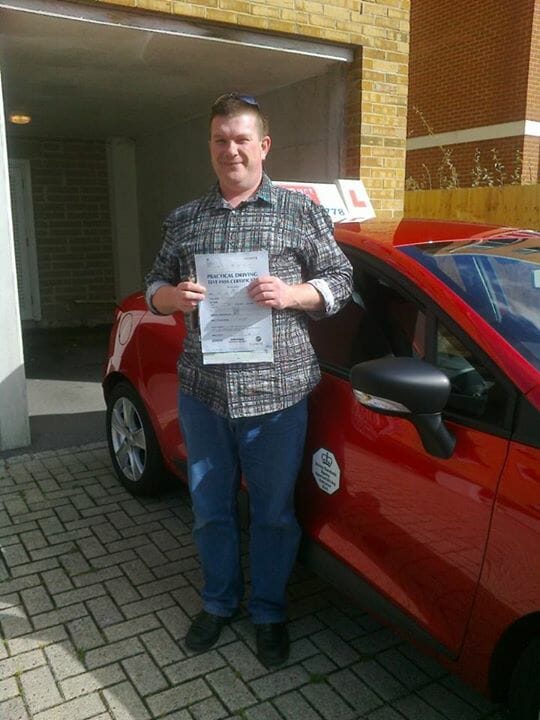
Understanding Junction Types and Their Challenges
Navigating junctions is a critical skill for learner drivers aiming to pass their driving test and qualify for a UK Driving Licence. Understanding the different types of junctions and their unique challenges is essential for safe and confident driving.
Types of Junctions on UK Roads
Learner drivers will encounter various types of junctions on UK roads, each presenting distinct challenges:
- T-Junctions: Where a minor road meets a major road, typically requiring a stop or give way.
- Roundabouts: Circular intersections where traffic moves in one direction around a central island.
- Crossroads: Intersections where two roads cross each other.
- Box Junctions: Marked with yellow grids, indicating areas where vehicles should not stop and block the intersection.
Differentiating Between Open and Closed Junctions
It is crucial to differentiate between open and closed junctions:
- Open Junctions: These have clear visibility of the road ahead, allowing drivers to see approaching traffic easily.
- Closed Junctions: These have limited visibility due to obstructions like buildings, hedges, fences or parked vehicles, requiring extra caution and slower approach speeds.
Impact of Marked and Unmarked Junctions on Navigation
Marked and unmarked junctions affect navigation decisions:
- Marked Junctions: Clearly indicated by road signs and markings, providing guidance on right-of-way and required actions.
- Unmarked Junctions: Lack clear signage, requiring drivers to use judgement and extra caution and apply general road rules.
Resources for Identifying Junction Types
To visually identify and understand different junction types, learners can utilise various resources:
- Driving Manuals: Comprehensive guides that include diagrams and explanations of junction types.
- Online Tutorials: Videos and interactive content that demonstrate real-life scenarios.
- Driving Lessons: Practical experience with an instructor who can provide personalised guidance and feedback.
By familiarising yourself with these junction types and their challenges, you can improve your navigation skills and boost your confidence on the road.

Mastering the MSPSL Routine for Junction Navigation
What Does the MSPSL Acronym Stand For, and How Is It Applied at Junctions?
The MSPSL routine stands for Mirror, Signal, Position, Speed, Look. This systematic approach ensures that you navigate junctions safely and efficiently. Here’s how each element is applied:
- Mirror: Check your mirrors to understand the traffic situation behind and beside you.
- Signal: Indicate your intentions early to inform other road users.
- Position: Position your vehicle correctly in the lane for your intended manoeuvre.
- Speed: Adjust your speed appropriately as you approach the junction.
- Look: Look for hazards, other vehicles, pedestrians, and cyclists before proceeding.
Why Is the MSPSL Routine Critical for Safe Junction Navigation?
The MSPSL routine is critical because it provides a structured method to approach and navigate junctions. It ensures that you:
- Communicate Clearly: Signalling early helps other road users understand your intentions.
- Maintain Awareness: Regular mirror checks keep you informed about the traffic around you.
- Position Correctly: Proper positioning reduces the risk of collisions and confusion.
- Control Speed: Adjusting speed allows for better control and reaction time.
- Identify Hazards: Looking for potential hazards ensures you can react appropriately.
How Can Learners Practice the MSPSL Routine with Smart Drive UK Instructors?
At Smart Drive UK, our instructors guide you through the MSPSL routine with practical exercises and real-world scenarios. You will:
- Receive Step-by-Step Instructions: Our instructors provide clear, step-by-step guidance on each element of the MSPSL routine.
- Engage in Practical Drills: Practice the routine in various traffic conditions to build confidence and proficiency.
- Get Personalised Feedback: Instructors offer personalised feedback to help you improve your technique.
When Should Each Element of the MSPSL Routine Be Initiated as One Approaches a Junction?
Timing is crucial for the MSPSL routine:
- Mirror: Check mirrors well before reaching the junction.
- Signal: Signal your intentions around 100 metres before the junction, depending on your speed of approach.
- Position: Position your vehicle as you approach the junction, ensuring you are in the correct lane.
- Speed: Begin adjusting your speed as you near the junction, slowing down gradually.
- Look: Start looking for hazards as you approach and continue to do so until you have safely navigated the junction.
By mastering the MSPSL routine, you can navigate junctions with greater safety and confidence.
The Role of Effective Observation at Junctions
What Constitutes Effective Observation at Junctions?
Effective observation at junctions involves a systematic approach to scanning the environment for potential hazards. This includes:
- Mirror Checks: Regularly checking rearview and side mirrors to stay aware of surrounding traffic.
- Blind Spot Checks: Turning your head to check areas not visible in mirrors.
- Scanning Ahead: Looking ahead to anticipate the actions of other road users.
- Peripheral Vision: Using peripheral vision to detect movement and changes in the environment.
Why Is Observation Critical in Preventing Accidents at Junctions?
Observation is crucial for several reasons:
- Hazard Detection: Identifying potential hazards early allows for timely reactions.
- Decision Making: Accurate observation informs better decision-making, such as when to proceed or yield.
- Communication: Observing other road users’ signals and actions helps in predicting their movements and communicating your intentions effectively.
- Safety: Continuous observation reduces the risk of collisions and ensures the safety of all road users.
How Can Learners Improve Their Observational Skills?
Improving observational skills requires practice and guidance:
- Regular Practice: Consistent practice in various traffic conditions helps in honing these skills.
- Instructor Feedback: Our instructors at Smart Drive UK provide personalised feedback to help you improve.
- Simulated Scenarios: Engaging in simulated driving scenarios can enhance your ability to observe and react.
- Mindfulness Techniques: Staying focused and avoiding distractions while driving.
Where Do Most Learners Struggle with Observation at Junctions, and How Can This Be Addressed?
Common struggles include:
- Inadequate Mirror Use: Failing to check mirrors frequently enough.
- Neglecting Blind Spots: Overlooking blind spots, leading to missed hazards.
- Tunnel Vision: Focusing too narrowly on the road ahead and missing peripheral hazards.
- Delayed Reactions: Slow to react to observed hazards.
To address these issues:
- Structured Training: Our structured training programmes emphasise the importance of regular mirror and blind spot checks.
- Incremental Learning: Gradually increasing the complexity of driving scenarios to build confidence.
- Feedback Loops: Continuous feedback from instructors to correct and improve observational habits.
By focusing on these areas, you can significantly enhance your observational skills and navigate junctions more safely.

Signal Timing and Use: Communicating Intentions Clearly
What Are the Best Practices for Signal Timing and Use at Junctions?
Effective signalling is essential for safe navigation through junctions. Here are the best practices:
- Early Signalling: Signal your intentions well in advance, approximately 100 metres before the junction.
- Consistent Signalling: Maintain your signal until you have completed the manoeuvre.
- Clear Signalling: Ensure your signals are clear and not misleading to other road users.
- Cancelling Signals: Turn off your signal promptly after completing the manoeuvre to avoid confusion.
Why Is Timely and Clear Signalling Important for Road Safety?
Timely and clear signalling is crucial for several reasons:
- Communication: Signals communicate your intentions to other road users, helping them anticipate your actions.
- Preventing Accidents: Clear signals reduce the risk of collisions by informing others of your planned movements.
- Legal Compliance: Proper signalling is a legal requirement and part of safe driving practices.
- Building Trust: Consistent signalling builds trust among road users, leading to smoother traffic flow.
How Can Learners Ensure Their Signalling Communicates Their Intentions Effectively?
To ensure effective communication through signalling:
- Practice Regularly: Consistent practice helps in developing the habit of timely signalling.
- Instructor Guidance: Our instructors at Smart Drive UK provide feedback on your signalling techniques.
- Awareness: Stay aware of your surroundings and signal appropriately based on traffic conditions.
- Check Signal Indicators: Regularly check your vehicle’s signal indicators to ensure they are functioning correctly.
Speed Control and Positioning at Junctions
What Factors Influence the Appropriate Speed and Positioning at Junctions?
Several factors influence the appropriate speed and positioning when approaching and navigating junctions:
- Traffic Conditions: The density and flow of traffic can dictate how fast you should approach a junction.
- Visibility: Limited visibility due to weather conditions or obstructions requires slower speeds and careful positioning.
- Junction Type: Different junctions (e.g., T-junctions, roundabouts) may have specific speed and positioning requirements.
- Road Signs and Markings: Adhering to road signs and markings ensures correct positioning and speed.
- Pedestrian Activity: High pedestrian areas necessitate reduced speed and heightened awareness.
Why Is Speed Control Crucial for Safe Junction Navigation?
Speed control is essential for several reasons:
- Reaction Time: Lower speeds provide more time to react to unexpected hazards.
- Vehicle Control: Maintaining an appropriate speed ensures better control over the vehicle.
- Safety: Proper speed reduces the risk of collisions and accidents.
- Compliance: Adhering to speed limits and road regulations is a legal requirement.
How Can Learners Practice Speed Control and Positioning with Smart Drive UK?
At Smart Drive UK, we offer structured lessons to help you master speed control and positioning:
- Guided Practice: Instructors provide real-time feedback on your speed and positioning.
- Simulated Scenarios: Practice in controlled environments to build confidence.
- Incremental Learning: Gradually increasing the complexity of junctions to improve skills.
- Personalised Feedback: Tailored advice to address individual challenges and improve techniques.
Common Mistakes at Junctions and How to Avoid Them
What Are the Most Common Mistakes Learners Make at Junctions?
Learners often make several common mistakes at junctions, including:
- Inadequate Observation: Failing to check mirrors and blind spots thoroughly.
- Incorrect Signalling: Not signalling early enough or forgetting to cancel signals.
- Improper Speed Control: Approaching junctions too quickly or too slowly.
- Poor Positioning: Incorrect lane positioning or drifting out of the lane.
- Hesitation: Indecisiveness when it is safe to proceed, leading to confusion.
Why Do These Mistakes Occur, and What Are Their Potential Consequences?
These mistakes typically occur due to:
- Lack of Experience: Inexperience in handling different junction types and traffic conditions.
- Nervousness: Anxiety can lead to rushed decisions or hesitation.
- Distraction: Focusing on too many things at once can cause oversight of critical actions.
- Misjudgment: Incorrect assessment of speed, distance, or the actions of other road users.
The potential consequences include:
- Accidents: Increased risk of collisions with other vehicles, pedestrians, or cyclists.
- Traffic Violations: Fines or penalties for improper signalling or lane usage.
- Test Failures: Failing the driving test due to critical errors at junctions.
How Can Learners Use Feedback from Driving Instructors to Improve?
Feedback from driving instructors is invaluable for improvement:
- Personalised Advice: Instructors provide tailored feedback based on your specific mistakes.
- Practical Tips: Receive actionable tips to correct errors and improve techniques.
- Confidence Building: Constructive feedback helps build confidence and reduce anxiety.
- Progress Tracking: Regular feedback sessions allow you to track progress and focus on areas needing improvement.

Practical Exercises for Improving Junction Navigation Skills
What Practical Exercises Can Help Learners Improve Their Junction Navigation Skills?
Practical exercises are essential for mastering junction navigation. Here are some effective exercises:
- Mirror and Blind Spot Checks: Practice regular mirror and blind spot checks to build awareness.
- Signalling Drills: Repeatedly practice signalling early and correctly.
- Speed Control: Exercises focusing on adjusting speed appropriately when approaching junctions.
- Positioning Practice: Position your vehicle correctly in various junction scenarios.
- Observation Techniques: Engage in exercises that enhance your ability to scan for hazards and other road users.
Why Are Real-World Practice and Simulations Important for Learning?
Real-world practice and simulations are crucial because they:
- Build Confidence: Hands-on experience helps you become more comfortable with junction navigation.
- Enhance Skill Retention: Practical application reinforces theoretical knowledge.
- Improve Reaction Time: Real-world scenarios improve your ability to react promptly to unexpected situations.
- Provide Context: Simulations offer a safe environment to practice complex manoeuvres without real-world risks.
Where Can Learners Find Safe Environments to Practice These Skills Outside of Lessons?
Outside of lessons, you can practice junction navigation skills in:
- Quiet Residential Areas: These areas typically have less traffic, making them ideal for practice.
- Empty Parking Lots: Use these spaces to practice positioning and speed control without the pressure of traffic.
- Driving Simulators: Access driving simulators at local driving schools or online platforms.
- Designated Practice Routes: Some areas have routes specifically designed for learner drivers to practice safely.
By engaging in these practical exercises, you can significantly improve your junction navigation skills and build the confidence needed for safe driving.
Dealing with Anxiety and Building Confidence at Junctions
Navigating junctions can be a source of anxiety for many learner drivers. However, with the right strategies and support, you can build confidence and improve your skills.
What Strategies Can Help Learners Deal with Anxiety When Navigating Junctions?
Several strategies can help manage anxiety:
- Breathing Techniques: Practice deep breathing exercises to stay calm.
- Positive Visualisation: Visualise successful navigation of junctions to build confidence.
- Gradual Exposure: Start with simpler junctions and gradually move to more complex ones.
- Mindfulness: Stay present and focused on the task at hand, avoiding distractions.
Why Is Confidence Important for Effective Junction Navigation?
Confidence is crucial for several reasons:
- Decision Making: Confident drivers make quicker and more accurate decisions.
- Safety: Confidence reduces hesitation, which can prevent accidents.
- Skill Application: Confident drivers are better at applying learned skills effectively.
- Stress Reduction: Confidence helps in managing stress and anxiety, leading to a more relaxed driving experience.
How Can Supportive Instruction from Smart Drive UK Help Build Learner Confidence?
At Smart Drive UK, we focus on building your confidence through:
- Personalised Lessons: Tailored lessons that address your specific needs and concerns.
- Positive Reinforcement: Encouragement and positive feedback to boost your confidence.
- Incremental Challenges: Gradually increasing the complexity of junctions to build your skills step-by-step.
- Safe Learning Environment: Providing a supportive and non-judgmental atmosphere for learning.
When Do Most Learners Begin to Feel More Confident About Their Junction Navigation Skills?
Confidence typically builds over time with consistent practice and support:
- Initial Lessons: Learners often feel anxious during the first few lessons.
- Midway Through Training: Confidence starts to build as you become more familiar with junctions and receive positive feedback.
- Pre-Test Phase: Most learners feel significantly more confident as they approach their driving test, having practised extensively and received comprehensive instruction.
By employing these strategies and leveraging the support from Smart Drive UK, you can effectively manage anxiety and build the confidence needed to navigate junctions safely and efficiently.
The Importance of Continuous Learning and Practice
Continuous learning and practice are essential for mastering junction navigation skills. Regular practice helps reinforce techniques and build confidence, ensuring you can navigate junctions safely and efficiently.
What Role Does Continuous Learning Play in Improving Junction Navigation Skills?
Continuous learning plays a crucial role in:
- Skill Reinforcement: Regular practice helps solidify the techniques learned during lessons.
- Adaptation: Adapting to different junction types and traffic conditions requires ongoing learning.
- Confidence Building: Consistent practice builds confidence, reducing anxiety and hesitation.
- Error Correction: Identifying and correcting mistakes through continuous learning improves overall driving skills.
What Are Some Advanced Techniques for Navigating Complex Junctions?
Advanced techniques for navigating complex junctions include:
- Gap Selection: Identifying and choosing safe gaps in traffic to proceed.
- Lane Discipline: Maintaining correct lane positioning throughout the junction.
- Roundabout Navigation: Understanding multi-lane roundabouts and the correct use of lanes.
- Priority Rules: Knowing and applying right-of-way rules accurately.
- Use of Indicators: Signalling intentions clearly and timely to other road users.
- Speed Adjustment: Modulating speed to match traffic flow and junction complexity.

Contact Us for Expert Junction Navigation Training
Navigating junctions can be challenging, but with the right training, you can master these skills confidently. At Smart Drive UK, we offer comprehensive training to help you navigate junctions safely and efficiently.
Getting in touch with us is easy:
- Phone: Call us at 01903 691002 for immediate assistance.
- Email: Send your inquiries to admin@smartdriveuk.co.uk for detailed information.
- Website: Visit our website at www.smartdriveuk.co.uk to learn more about our services and book lessons online.
- Social Media: Connect with us on our social media platforms for updates and tips.
When Is the Best Time to Start Professional Driving Lessons for Optimal Learning Outcomes?
The best time to start professional driving lessons is:
- Early in Your Learning Journey: Begin lessons as soon as you obtain your provisional licence.
- After Basic Familiarisation: Once you have a basic understanding of vehicle controls, start focusing on junction navigation.
- Before Your Driving Test: Ensure you have ample time to practice and refine your skills before taking the practical test.
By choosing Smart Drive UK, you can be confident in receiving top-quality training that prepares you for safe and effective junction navigation.



